Skiing and snowboarding are thrilling winter sports that offer a sense of freedom and excitement unlike any other. For individuals with limb loss or mobility challenges, adaptive skiing and snowboarding open the door to new adventures, making the mountains accessible to everyone. With the right equipment, training, and mindset, anyone can experience the rush of gliding down the slopes.
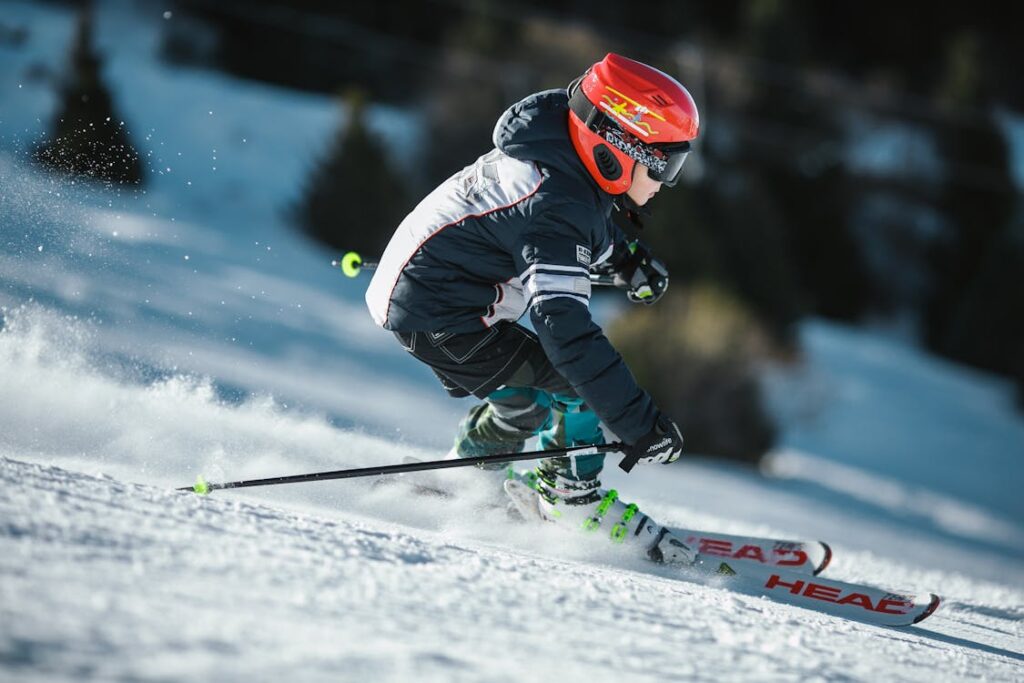
Understanding Adaptive Skiing and Snowboarding
Adaptive skiing and snowboarding are designed to accommodate individuals with different physical abilities, using specialized equipment and modified techniques.
Whether you have a lower-limb amputation, upper-limb loss, or limited mobility, there are options available to suit your needs. The goal is to provide a safe, controlled, and exciting experience that allows you to enjoy the slopes just like any other skier or snowboarder.
These sports have been evolving for decades, with innovations in prosthetics and adaptive gear making it possible for more people to participate.
Today, many ski resorts offer adaptive programs, including lessons with trained instructors, specialized rental equipment, and dedicated accessible trails. This means you don’t have to figure everything out on your own—you’ll have expert guidance to help you start strong.
Choosing Between Adaptive Skiing and Snowboarding
Deciding whether to ski or snowboard depends on personal preference, comfort, and mobility level. Each sport has its own advantages, and the best choice will depend on how you feel on the snow.
Skiing is often easier for beginners because the two-ski setup provides more stability. It allows for independent leg movement, which can be beneficial if you are using a prosthetic limb.
Adaptive skiing offers several options, including two-track, three-track, four-track, and sit-skiing, depending on your level of mobility and control.
Snowboarding, on the other hand, requires more balance and core strength. Since both feet are strapped to a single board, turning and stopping rely heavily on body control.
However, adaptive snowboarding modifications—such as custom bindings and outriggers—make the sport accessible to riders with different abilities. If you enjoy a more fluid, surf-like experience, snowboarding might be the better fit.
Both sports provide an exhilarating sense of movement and freedom. If you’re unsure which one to try first, many adaptive programs offer introductory sessions where you can test both before making a decision.
Essential Adaptive Skiing and Snowboarding Equipment
The right equipment is key to a smooth and comfortable experience on the slopes. Adaptive skiing and snowboarding gear is designed to enhance stability, control, and safety, ensuring that you can focus on enjoying the ride.
For skiing, adaptive gear includes sit-skis (for individuals with lower-body limitations), outriggers (small ski-like poles for balance), and specialized bindings that accommodate prosthetic limbs.
Skiers with lower-limb amputations may also use prosthetic ski legs, which provide flexibility and shock absorption to mimic natural movement.
For snowboarding, adaptive equipment includes modified bindings that allow riders to strap in securely, even with a prosthetic foot. Some snowboarders use outriggers for additional balance, while others adjust their stance to distribute weight more effectively.
Riders with upper-limb amputations can modify their balance techniques to compensate for the lack of arm movement.
At Robobionics, we emphasize the importance of customized prosthetics for winter sports. If you plan to ski or snowboard regularly, investing in a prosthetic designed for high-impact activity will significantly improve your experience.
Finding the Right Adaptive Skiing and Snowboarding Program
Starting with professional instruction is one of the best ways to build confidence on the slopes. Many ski resorts have adaptive sports programs that cater to first-time skiers and snowboarders, offering personalized coaching and specialized equipment rentals.
These programs ensure that you get one-on-one instruction from experts who understand the mechanics of adaptive skiing and snowboarding.
A good adaptive program will provide:
- Qualified instructors trained in adaptive techniques.
- Tailored lessons based on your mobility level.
- Access to specialized equipment without the need for immediate investment.
- Assistance with getting on and off lifts safely.
These lessons focus on fundamental skills, such as turning, stopping, and adjusting to different snow conditions. Instructors also help you adapt your technique based on how your body responds to movement on the slopes.
If you’re unsure where to start, many organizations, such as the International Paralympic Committee and national adaptive sports groups, offer directories of certified adaptive skiing and snowboarding programs.
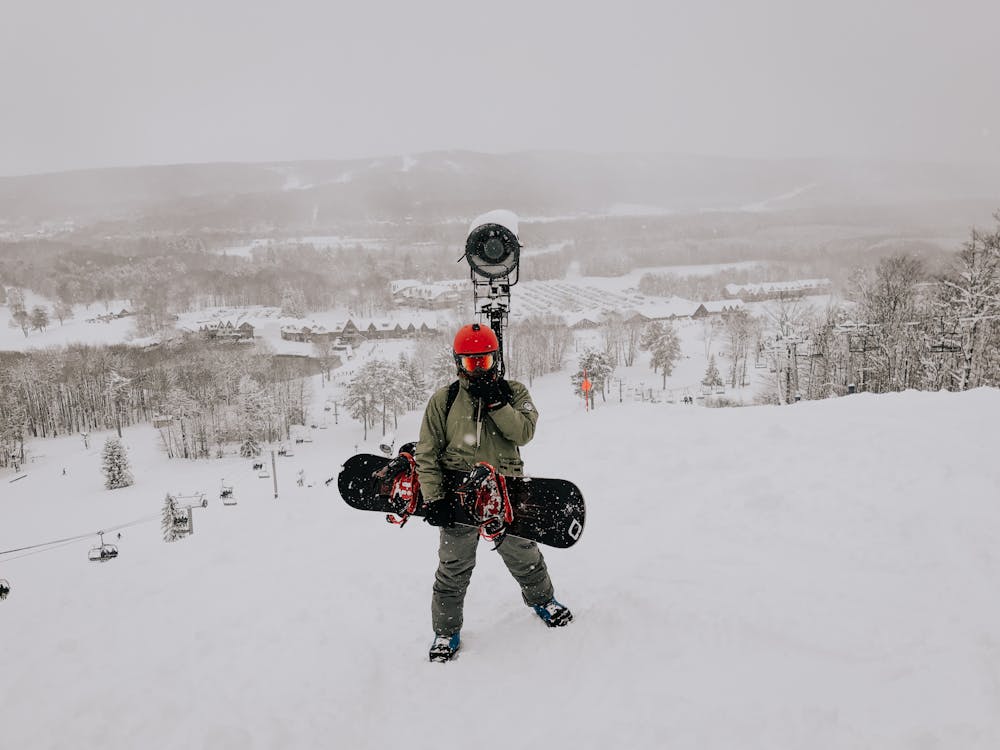
Building Confidence on the Slopes: Learning the Basics
Once you have the right equipment and a good instructor, it’s time to get comfortable on the snow.
Learning to ski or snowboard as an adaptive athlete involves some adjustments, but with patience and practice, you can develop the skills needed to navigate the slopes with ease.
The first step is getting used to the sensation of sliding on snow. If you are using a prosthetic limb, you may need time to understand how it responds to movement and balance changes.
Start on flat terrain and practice shifting your weight from side to side. This helps you develop control before moving onto steeper slopes.
For skiers, learning to stop and turn is essential. Most adaptive skiers use a wedge (snowplow) technique to control their speed when starting out.
As you progress, you’ll learn parallel turns, where both skis move together for smoother control. If you are using a sit-ski, you’ll focus on leaning into turns and using your core to steer.
For snowboarders, balance and edge control are key. Your instructor will teach you how to control speed by shifting weight between your heel and toe edges.
Because both feet are strapped into one board, turning requires full-body movement. If you have an upper-limb difference, you may need to adjust your stance to maintain stability without using your arms for balance.
Falling is part of learning, and adaptive skiing and snowboarding come with unique challenges. The important thing is not to get discouraged. Many experienced adaptive athletes started exactly where you are now, and with persistence, you’ll see improvement.
Handling Ski Lifts and Getting Around the Mountain
One of the most common concerns for beginners is how to use ski lifts with adaptive equipment. Fortunately, most resorts offer adaptive-friendly lift access with trained staff to assist.
For stand-up skiers and snowboarders, getting on and off a lift follows the same process as traditional riders. You may need a bit of assistance to stabilize your prosthetic leg or adjust your balance, but once seated, the ride is smooth.
For sit-skiers, chairlifts have special loading systems that allow easy boarding. Many resorts also have detachable lifts that slow down for more controlled entry and exit.
Your instructor will show you how to safely dismount at the top of the slope and get into position before starting your run.
Navigating the mountain is easier than it seems. Many resorts mark adaptive-friendly trails, ensuring a safe and enjoyable experience for riders of all levels. If you ever feel unsure about a route, ski patrol and adaptive program staff are always available to help.
Adapting to Different Snow and Weather Conditions
Skiing and snowboarding conditions change daily, so learning how to adapt is an important part of becoming a confident rider. Snow can be soft and powdery one day and icy and hard-packed the next.
The way your prosthetic or adaptive equipment interacts with the snow will feel different depending on the conditions.
In deep powder snow, turning can be more challenging because the snow slows your movement. Skiers may need to lean back slightly, while snowboarders may need to adjust their weight to keep their board from sinking.
On icy terrain, stopping and turning require more precision. Since there is less grip, you’ll need to focus on keeping your weight centered and making gradual movements rather than sudden stops. If you are using a sit-ski or outriggers, maintaining good edge control is key.
Cold weather can also affect prosthetics and adaptive gear. Some materials stiffen in low temperatures, which may impact flexibility. Wearing insulated liners and checking for proper fit before heading out ensures comfort and mobility throughout the day.
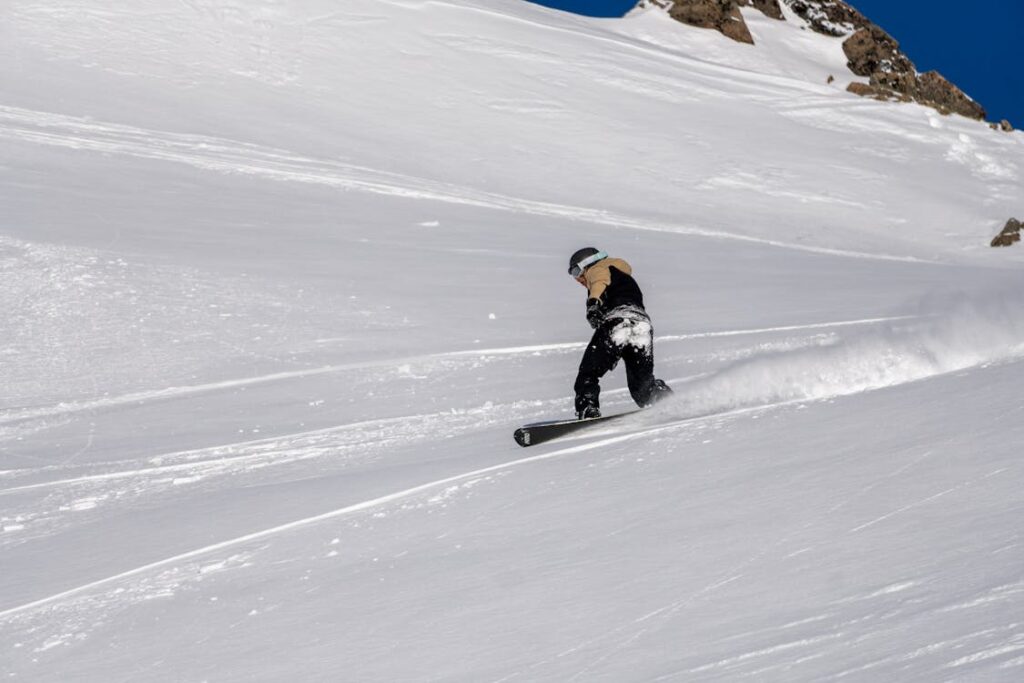
Pushing Your Limits: Advancing in Adaptive Skiing and Snowboarding
Once you’ve mastered the basics, the real fun begins. As you gain confidence on the slopes, you can start exploring more advanced terrain, refining your technique, and even training for competitions.
Adaptive skiing and snowboarding offer endless opportunities to grow, whether you want to challenge yourself with steeper slopes, improve speed and agility, or participate in organized events.
The transition from beginner to intermediate riding happens naturally as you build muscle memory and balance. Over time, turns become smoother, stopping feels more controlled, and navigating different snow conditions gets easier.
The key is progressing at your own pace while pushing yourself just enough to improve.
Refining Technique for Better Control and Efficiency
As you become more comfortable, you’ll start noticing small adjustments that make a big difference in your control and efficiency.
For skiers, focusing on edge control and weight distribution helps improve turns and speed. Adaptive skiers using a prosthetic may experiment with stance adjustments, such as widening or narrowing their position to find better stability.
If you’re using a sit-ski, learning to fine-tune core movements will help with steering and shock absorption on uneven terrain.
For snowboarders, developing better carving techniques allows for smoother turns and more control at higher speeds. If you rely on outriggers, you may start using them less as your balance improves.
Advanced riders also explore switch riding, where they learn to ride with their non-dominant foot forward, which adds versatility and control in different situations.
Taking on Steeper Slopes and Terrain Parks
Once you’re confident on beginner and intermediate runs, steeper slopes and terrain parks can take your skills to the next level.
Steeper slopes require more control because speed increases naturally. Skiers may focus on shorter, quicker turns to regulate speed, while snowboarders practice dynamic edge control to navigate safely.
Working with an instructor or coach ensures you develop strong habits before tackling more advanced terrain.
Terrain parks are an exciting option for adaptive athletes looking to add creativity to their riding. These parks include features like small jumps, boxes, and rails, which allow for freestyle movements.
Adaptive skiers and snowboarders modify tricks based on their ability, using specialized equipment to land safely. Many professional adaptive riders have made terrain parks their specialty, proving that anything is possible with the right technique and practice.
Competing in Adaptive Skiing and Snowboarding
If you love the thrill of the sport, competitive adaptive skiing and snowboarding may be the next step. The Paralympic Winter Games and other international competitions feature events specifically designed for adaptive athletes.
These include downhill racing, slalom, snowboard cross, and freestyle events.
Training for competitions involves specialized coaching, strength conditioning, and mental preparation. Athletes work on precision, endurance, and speed, refining their movements to compete at the highest level.
Even if you don’t plan to compete, setting personal goals and tracking progress can be incredibly rewarding.
At Robobionics, we believe that adaptive sports should be limitless. Whether your goal is to explore new trails, master challenging runs, or compete on the world stage, the right mindset and equipment will help you get there.
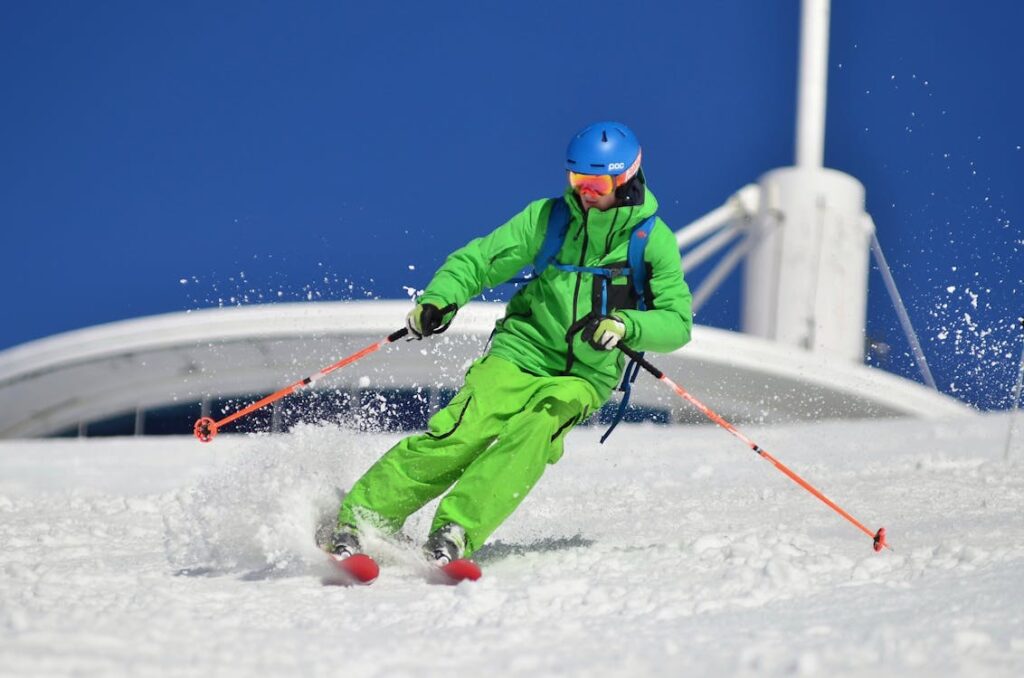
Overcoming Mental Barriers and Building Confidence on the Slopes
Adaptive skiing and snowboarding are not just about physical skill—they also require mental resilience and confidence.
Many new riders, especially those with limb differences or mobility challenges, face psychological barriers that can hold them back from fully enjoying the sport.
However, with the right mindset and approach, these challenges can be overcome, allowing for a truly liberating experience on the slopes.
Addressing Fear and Doubt
It’s natural to feel hesitant when trying something new, especially a sport that involves speed, balance, and unpredictable conditions.
Many adaptive athletes worry about falling, losing control, or not being able to keep up with others. The key to overcoming these fears is gradual exposure and consistent practice.
Starting on gentle terrain and progressing at your own pace builds confidence without unnecessary pressure.
Working with an adaptive instructor can also make a huge difference, as they provide not only technical guidance but also encouragement tailored to your specific needs.
Understanding that falling is part of learning helps shift your mindset from fear of failure to embracing the process of improvement.
Shifting Your Perspective: Focus on Progress, Not Perfection
Many athletes compare themselves to able-bodied skiers and snowboarders, which can sometimes be discouraging. However, adaptive sports are about personal growth and achievement, not comparison. Instead of focusing on what’s different, focus on what’s possible.
Every session on the slopes brings progress, whether it’s learning a new turning technique, handling a steeper slope, or simply feeling more comfortable on your equipment.
Keeping track of small victories builds confidence and reinforces the idea that you belong on the mountain just as much as anyone else.
Using Visualization and Mental Training
Professional athletes use visualization techniques to improve performance, and adaptive skiers and snowboarders can benefit from the same approach.
Before hitting the slopes, mentally rehearse each movement—imagine gliding down the mountain, feeling in control, making smooth turns, and stopping with ease. This mental practice helps condition the brain for success and reduces anxiety before attempting new skills.
Another effective strategy is positive self-talk. Instead of focusing on doubts, reinforce confidence with statements like, “I am in control,” “I am improving every run,” or “I can handle this.” Training the mind to stay positive makes a noticeable difference in how the body performs.
Building a Supportive Community
Surrounding yourself with other adaptive athletes can be incredibly motivating. Whether through local adaptive sports programs, online communities, or ski resort groups, connecting with people who share similar experiences provides encouragement and practical advice.
Seeing others succeed in the sport reinforces the belief that you can, too.
Many experienced adaptive athletes enjoy mentoring newcomers, offering tips and sharing personal experiences about overcoming challenges. Their guidance helps break down mental barriers and creates a sense of belonging in the skiing and snowboarding world.
At Robobionics, we are passionate about empowering individuals to embrace new challenges with confidence. Adaptive skiing and snowboarding are not just about sport—they are about freedom, self-discovery, and proving to yourself that anything is possible.
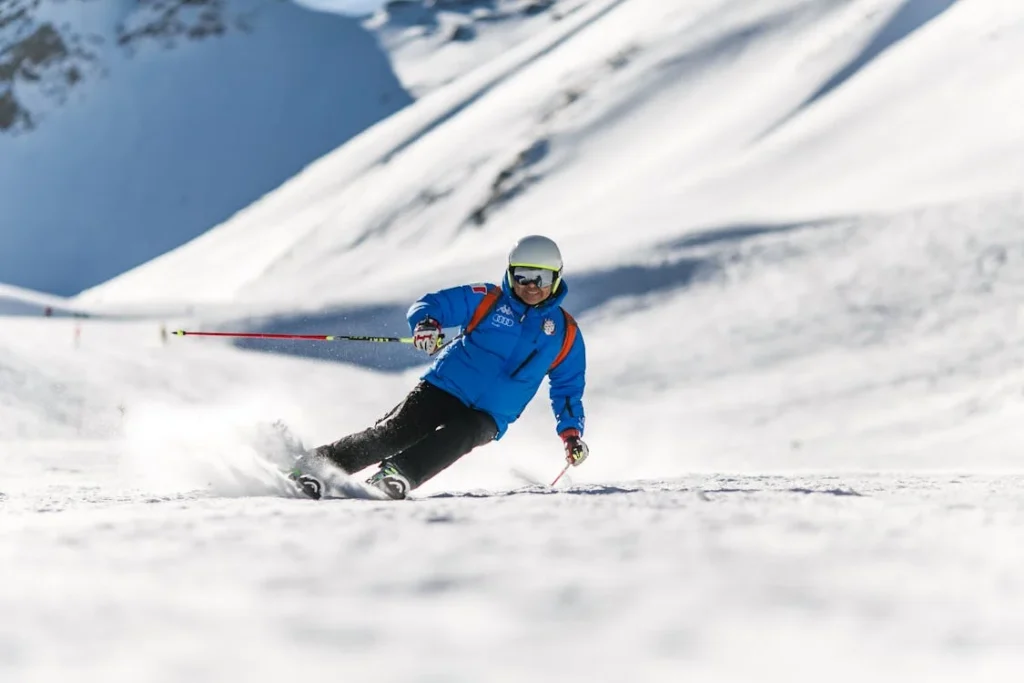
The Role of Prosthetics in Adaptive Skiing and Snowboarding
Prosthetic technology has transformed adaptive skiing and snowboarding, allowing athletes with limb loss to move with greater stability, comfort, and efficiency.
Whether you use a lower-limb prosthetic for skiing or an upper-limb prosthetic for balance and control, the right equipment can make all the difference in performance.
Choosing the Right Prosthetic for Winter Sports
Not all prosthetics are built for high-impact winter activities. Traditional everyday prosthetics may lack the flexibility, shock absorption, and weather resistance needed for skiing and snowboarding.
This is why specialized sports prosthetics are designed with performance in mind, offering enhanced mobility and durability.
For skiers with lower-limb prosthetics, having a knee and foot system that mimics natural movement is crucial. High-quality shock-absorbing knees help with smooth weight transitions when turning and stopping.
Prosthetic feet designed for skiing have flexible ankle joints that adjust to terrain changes, allowing for better edge control. Some skiers even choose prosthetic ski legs, which are customized to provide maximum range of motion while reducing strain on the residual limb.
For snowboarders, flexibility and balance are essential. A prosthetic foot with a multi-axial ankle helps distribute pressure evenly across the board, preventing stiffness when carving turns.
Adjustable bindings can accommodate the shape of the prosthetic, ensuring a secure and comfortable fit.
Upper-limb prosthetics also play an important role. For adaptive skiers who use outriggers (poles with small skis at the base), an upper-limb prosthetic can assist with grip and balance.
Snowboarders with upper-limb amputations often adjust their stance and use core strength for control, but prosthetic arms can provide additional stability when needed.
At Robobionics, we emphasize prosthetics that enhance performance, comfort, and adaptability.
Whether you need a lightweight, high-impact prosthetic for skiing or a customized fit for snowboarding, having the right equipment tailored to your sport will help you move more naturally on the slopes.
Caring for Your Prosthetic in Cold Weather
Winter conditions can be tough on prosthetics, so proper maintenance is essential to ensure optimal performance. Cold temperatures can make some materials stiffen, reducing flexibility.
Snow and moisture can also affect joints, liners, and suspension systems, leading to discomfort if not managed properly.
Before heading to the slopes, check that your prosthetic is in good condition. Wearing insulated liners and moisture-wicking socks helps keep the residual limb warm and dry, preventing skin irritation.
If your prosthetic has mechanical joints or hydraulic systems, keeping them lubricated ensures smooth movement even in freezing temperatures.
After a day on the mountain, dry your prosthetic thoroughly to prevent any buildup of snow or moisture. Regular maintenance checks help extend the lifespan of your equipment and keep you performing at your best.
Customizing Your Prosthetic for Maximum Performance
Every athlete has different needs, which is why customization is key when choosing a prosthetic for skiing or snowboarding.
Some adaptive athletes prefer rigid setups for better power transfer, while others require flexible joints for smoother movement. The best way to find the right fit is to work with prosthetists who specialize in sports technology.
At Robobionics, we work closely with adaptive athletes to design prosthetic solutions tailored to their specific sport and mobility level.
Whether you are just starting out or looking to enhance your performance, a well-fitted prosthetic can take your skiing or snowboarding experience to the next level.
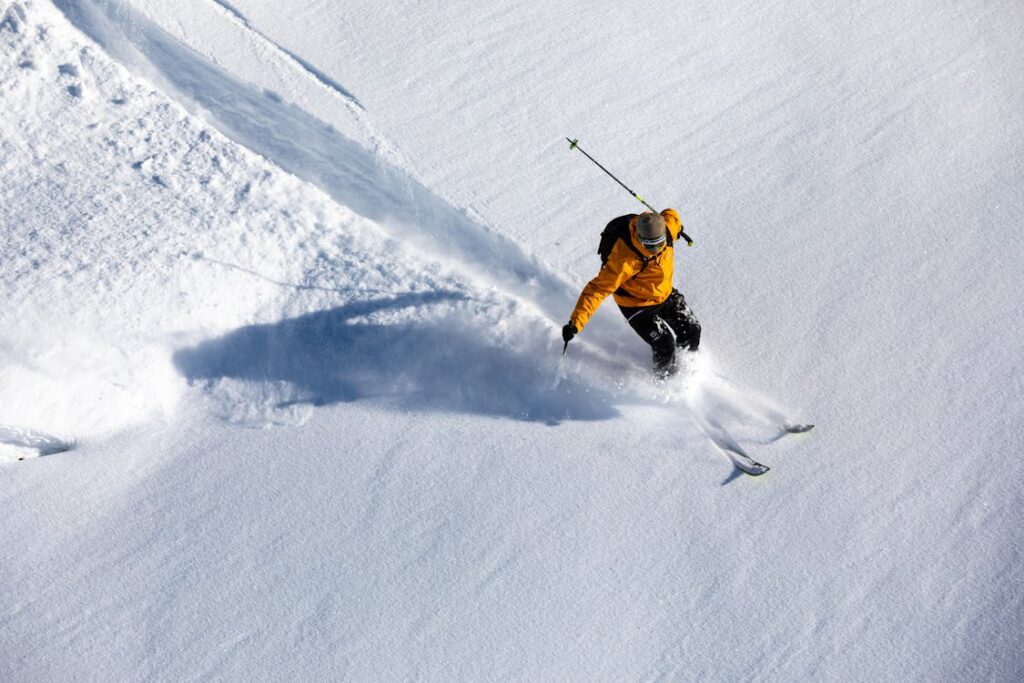
Strength and Conditioning for Adaptive Skiing and Snowboarding
Skiing and snowboarding require a combination of strength, balance, and endurance. For adaptive athletes, training off the slopes is just as important as practice on the snow.
A well-structured strength and conditioning program can improve mobility, enhance control, and reduce injury risk, ensuring a better experience on the mountain.
Building Core Strength for Stability
The core muscles—abdominals, obliques, and lower back—play a major role in skiing and snowboarding. A strong core helps with balance, weight shifts, and edge control, allowing for smoother movements on the snow.
Since adaptive athletes may rely more on core stability due to limb differences, developing a strong foundation is essential.
Exercises like planks, Russian twists, and stability ball rollouts strengthen the core while improving body awareness. Medicine ball throws and rotational exercises mimic the twisting movements used when making turns, enhancing coordination for both skiers and snowboarders.
Leg and Lower-Body Strength for Power and Control
For skiers and snowboarders using lower-limb prosthetics, strong legs are key to maintaining control and endurance.
Since prosthetic limbs do not have active muscle contractions, the surrounding muscles—such as the quads, hamstrings, and glutes—must compensate for power and stability.
Squats, lunges, and step-ups help develop lower-body strength while improving coordination between the intact and prosthetic limbs.
Resistance band exercises target hip stability and knee control, which are crucial for absorbing impact when skiing over uneven terrain or landing jumps in snowboarding.
For sit-skiers, upper-body strength becomes the focus. Exercises like seated rows, shoulder presses, and triceps dips help develop the power needed to maneuver the sit-ski efficiently.
Since sit-skiers rely on their arms and core to steer, endurance training is also important for maintaining strength throughout long ski sessions.
Balance and Proprioception Training
Adaptive skiers and snowboarders must develop a heightened sense of balance and body positioning to compensate for changes in mobility. Training proprioception (the body’s ability to sense movement and position) improves responsiveness and control on the snow.
Using balance boards, BOSU balls, or wobble cushions helps strengthen stabilizing muscles and trains the brain to react to shifts in weight.
Practicing single-leg stands or dynamic balance drills improves confidence, especially for athletes using a prosthetic leg or adapting to outriggers.
Cardiovascular Endurance for Long Days on the Slopes
Skiing and snowboarding require sustained energy, making cardiovascular fitness a key component of training.
Adaptive athletes can improve endurance through activities like cycling, rowing, swimming, and elliptical workouts, all of which provide low-impact cardio while building overall stamina.
High-intensity interval training (HIIT) is particularly effective for skiers and snowboarders, as it simulates the bursts of energy needed for quick turns and downhill runs.
Short sprints followed by controlled recovery periods train the body to handle both high-energy movements and moments of rest, similar to real conditions on the slopes.
Sport-Specific Training for Adaptive Athletes
For those serious about progressing in adaptive skiing and snowboarding, sport-specific drills can take performance to the next level. Practicing dynamic weight shifts, edge control movements, and explosive jumps helps prepare the body for real conditions.
Working with an adaptive sports coach or physical therapist can provide personalized training programs that address specific needs based on an athlete’s mobility level, prosthetic use, and performance goals.
At Robobionics, we understand the importance of a strong and well-conditioned body for adaptive sports. Training smart and preparing ahead of time makes skiing and snowboarding more enjoyable, safer, and more empowering for every athlete.
Conclusion
Adaptive skiing and snowboarding are more than just winter sports—they are a gateway to freedom, confidence, and adventure. With the right equipment, training, and mindset, anyone can experience the thrill of gliding down the slopes, regardless of physical ability.
Starting out may feel challenging, but each run builds strength, skill, and self-belief. Whether you are using a prosthetic leg, sit-ski, outriggers, or specialized bindings, adaptive technology continues to break barriers, making the mountains more accessible than ever. By focusing on proper training, balance, and endurance, you can develop the control needed to navigate different terrains with ease.
At Robobionics, we are committed to supporting adaptive athletes by providing high-quality prosthetics and expert guidance tailored to sports performance. Whether you are a beginner or looking to advance, we are here to help you find the right solutions for your needs.
If you’re ready to experience the excitement of adaptive skiing or snowboarding, connect with us today to explore prosthetic options designed for active lifestyles. The mountains are waiting—are you ready to ride?



